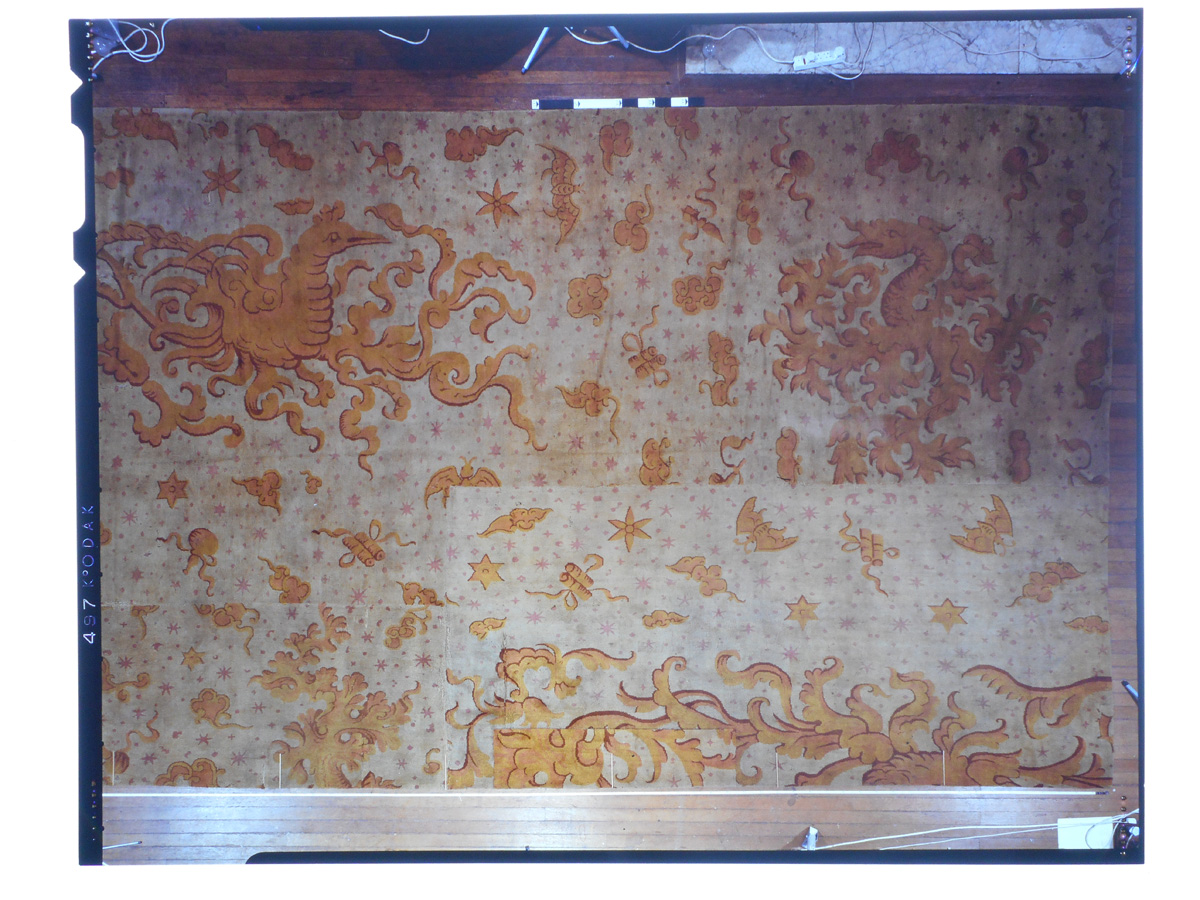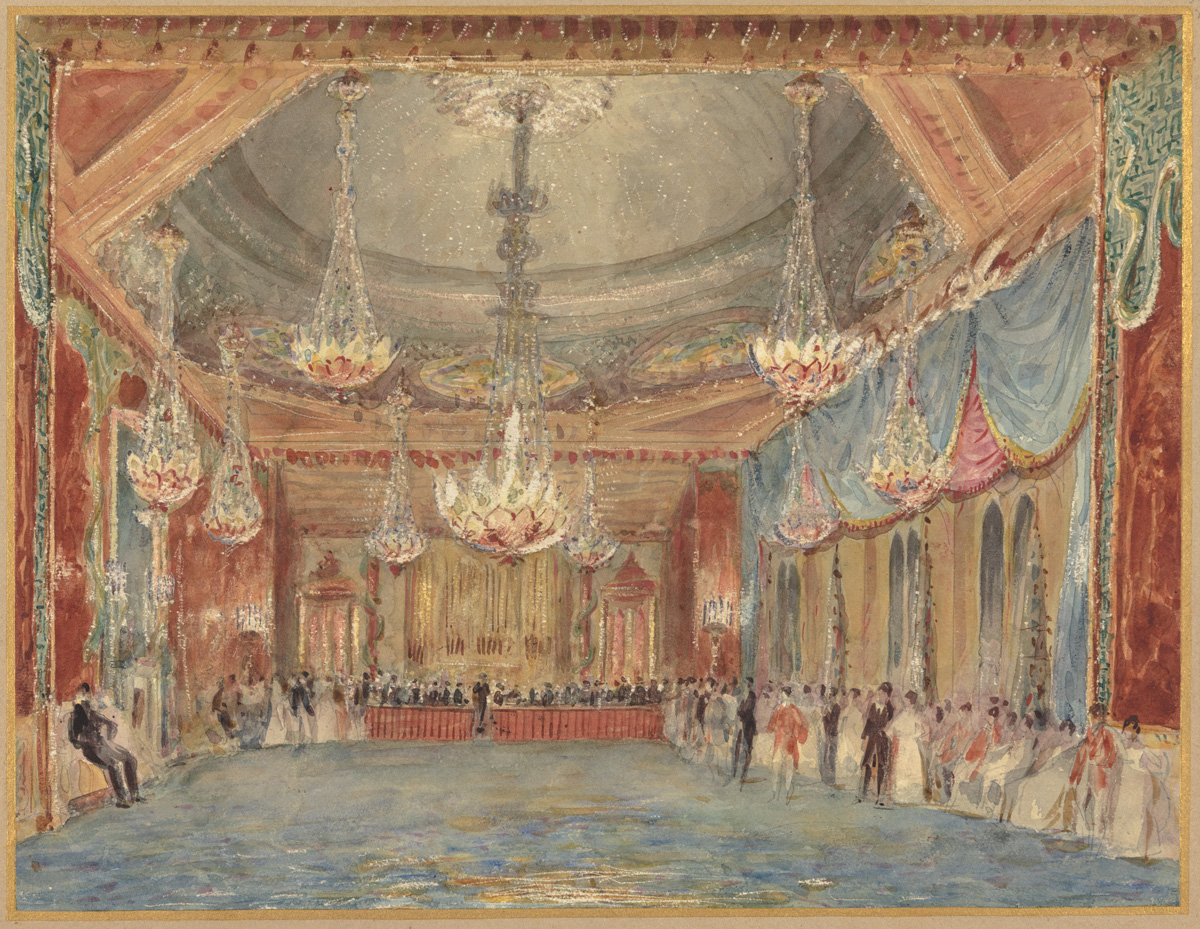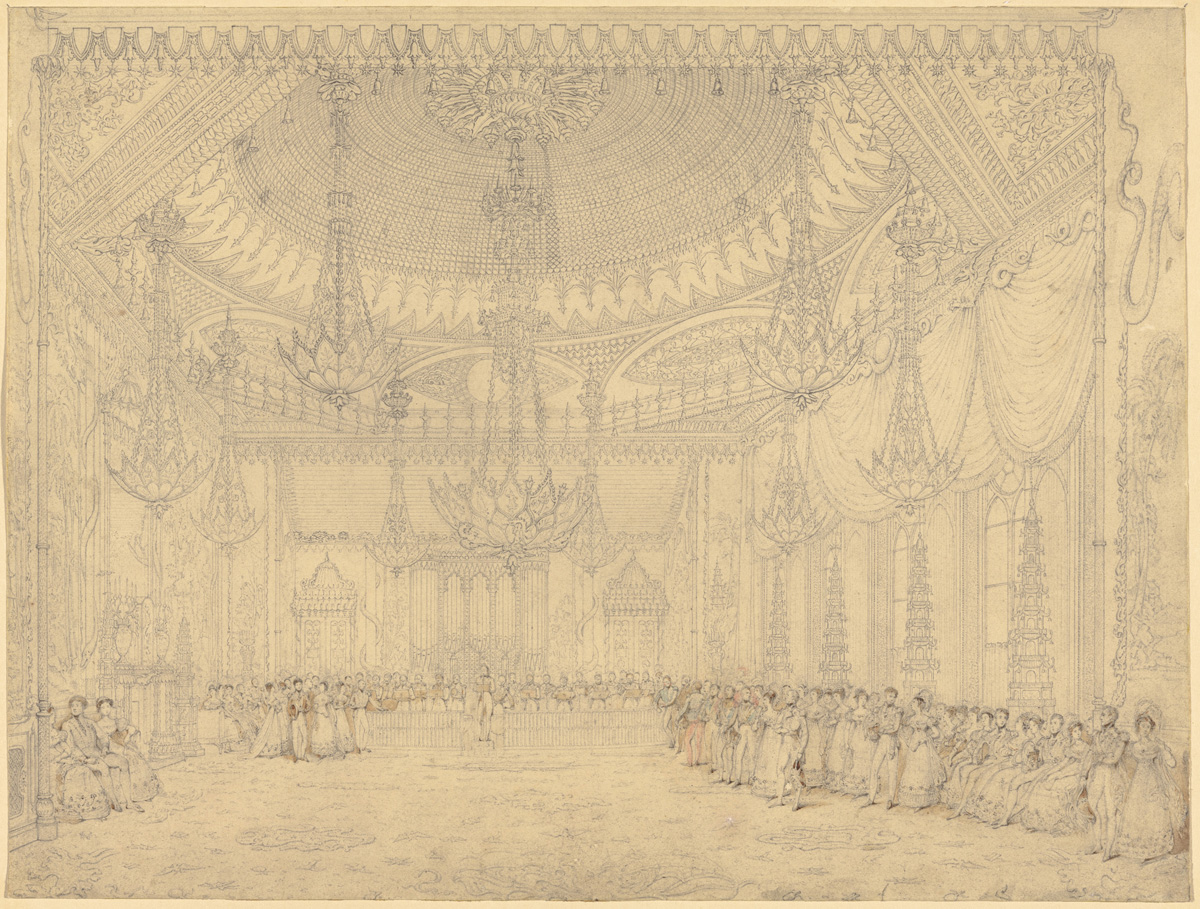The Music Room carpet: A ‘very large and elegant’ fragment from the Pavilion travels back to London
On 13 May 2024 two large carpet fragments that formed part of the 1820s interiors of the Royal Pavilion left the building and made their way to London. It was not the first time they had been on the move.

One of them was a large part of the Music Room carpet, the other of the Saloon carpet. Both had been on loan to us from the Royal Collection Trust for many decades and are amazing survivors of the three Axminster carpets that were made for the three greatest rooms of the Pavilion during the transformation of the Royal Pavilion under the architect John Nash and the designers John and Frederick Crace and Robert Jones between 1815 and 1823.
They were spectacular and enormous carpets, fitted to the rooms, and brought fame to the Axminster firm in Devon, which had been founded in 1755 by the cloth weaver Thomas Whitty. He had invented the practical method by which very large hand knotted carpets could be made. The size and design patterns of the Music Room, Banqueting Room and Saloon carpets can be considered the factory’s greatest achievements. Axminster folded in 1835.

Of all the carpets in the Royal Pavilion, the Music Room Axminster is the one we know most about, partly because this large portion, measuring nearly 6 by 4 meters, survived (albeit faded and stretched). It had been commissioned from the Axminster factory in 1817, where it was made under the direction of Samuel Whitty, grandson of Thomas Whitty. In the Pavilion’s Abstract of Accounts from 1817, the Messrs. Bailey & Saunders (Upholsterers) charged £700 for the ‘very large & eleg’t Axminster Carpet of the best quality made throughout from Mr. Crace’s design & 5 Window Pieces to correspond’. This was a very expensive carpet indeed. For designing it, Frederick Crace charged the comparatively small amount of £10.


Several early descriptions of it survive, and we also have the images from the 1826 book of views of the Royal Pavilion, published by John Nash. Here we see the aquatint from the book, as well as the original watercolour and pencil drawing by Augustus Charles Pugin of the room, created some time in the early 1820s.
The 1828 inventory of the Royal Pavilion describes it ‘An Axminster carpet planned to the room of blue ground, large red and yellow scroll dragon centre, large dragons, birds butterflies stars and other devices.’ These various Chinese-inspired decorative motifs were lifted by the Craces from Chinese export ware and images of China created by those who did travel there. Although no complete design for the carpet survives, we have in our collections many drawings by the Craces of floral, geometrical, and other motifs, such as bats, clouds and dragons, that may have been part of the carpet design.

Like most other carpets, it was removed from Pavilion in the late 1840s by Queen Victoria ahead of the sale of the estate in 1850. The one currently in the Music Room is a reproduction from 1987.
We know that the original Music Room carpet was used in the so-called Chinese Breakfast Room on the north-east corner of the new East Wing of Buckingham Palace, and it is clearly visible in this painting by James Roberts, dated May 1850 . You can also spot the Music Room fireplace in the room, as well as many other objects and fittings from the Royal Pavilion. It is possible that the fragment that has just returned to the Royal Collection Trust is the one seen in this picture or was the offcut from it.
This summer, these Pavilion-inspired interiors of the East Wing of Buckingham Palace will be open to the public for the first time as part of guided tours. We will be welcoming a group of their staff to the Royal Pavilion soon to see the historical context and origin of the interiors.